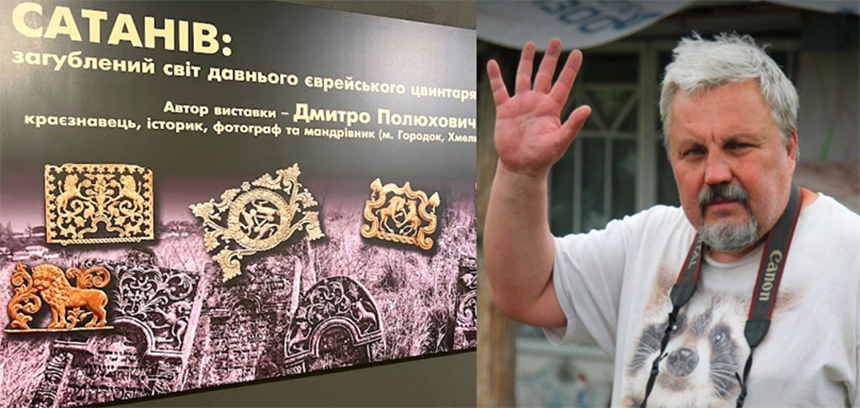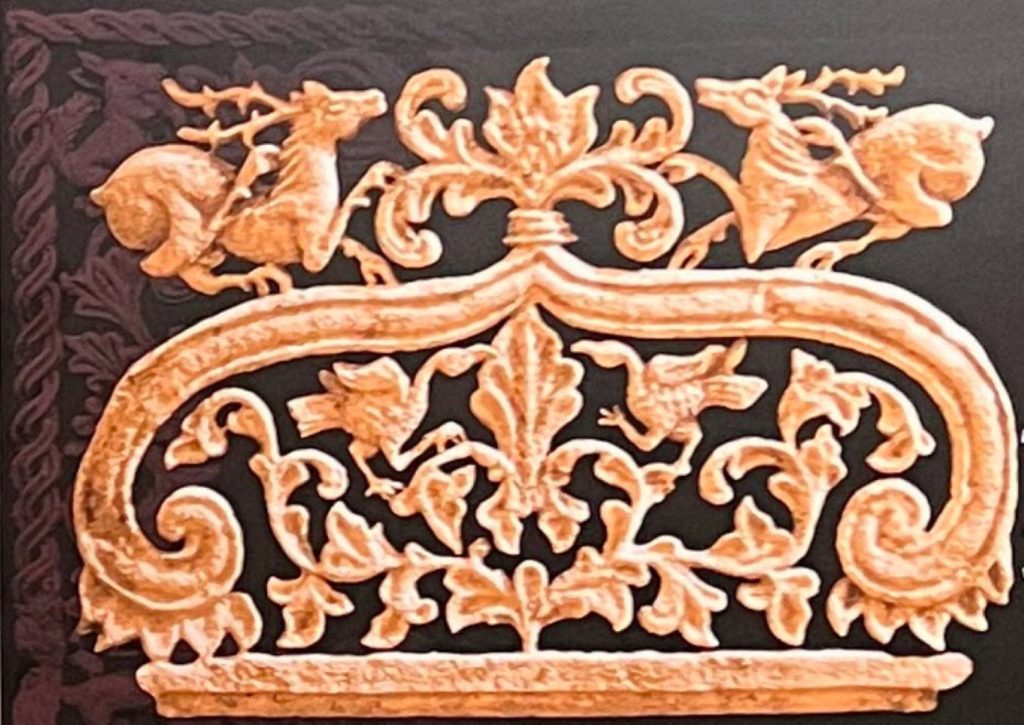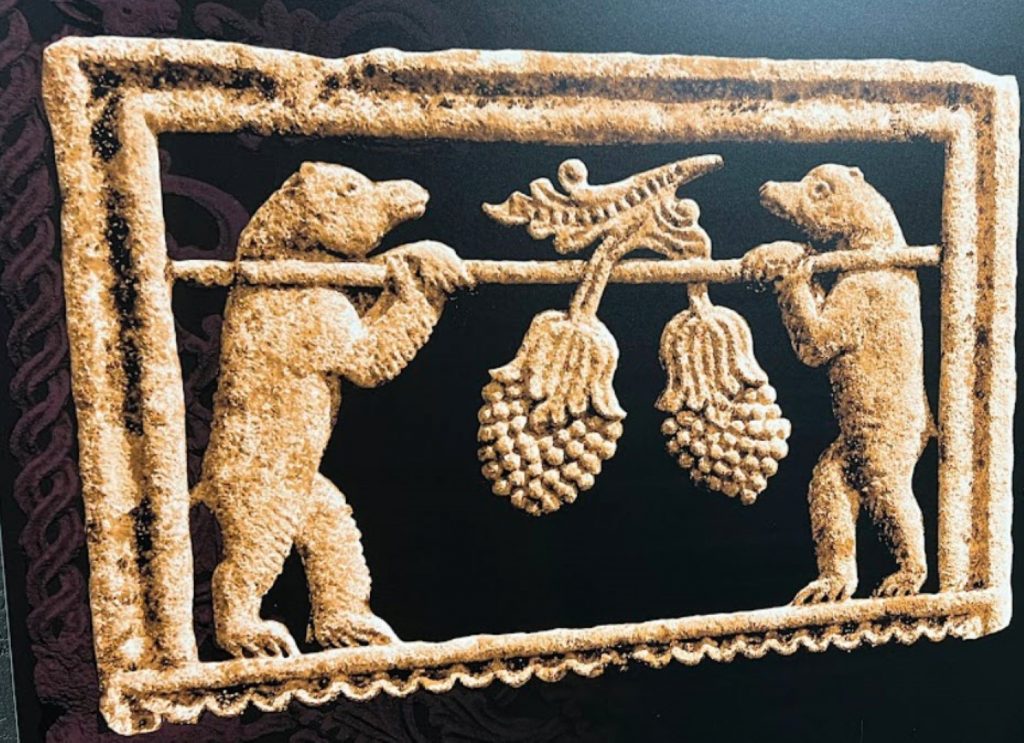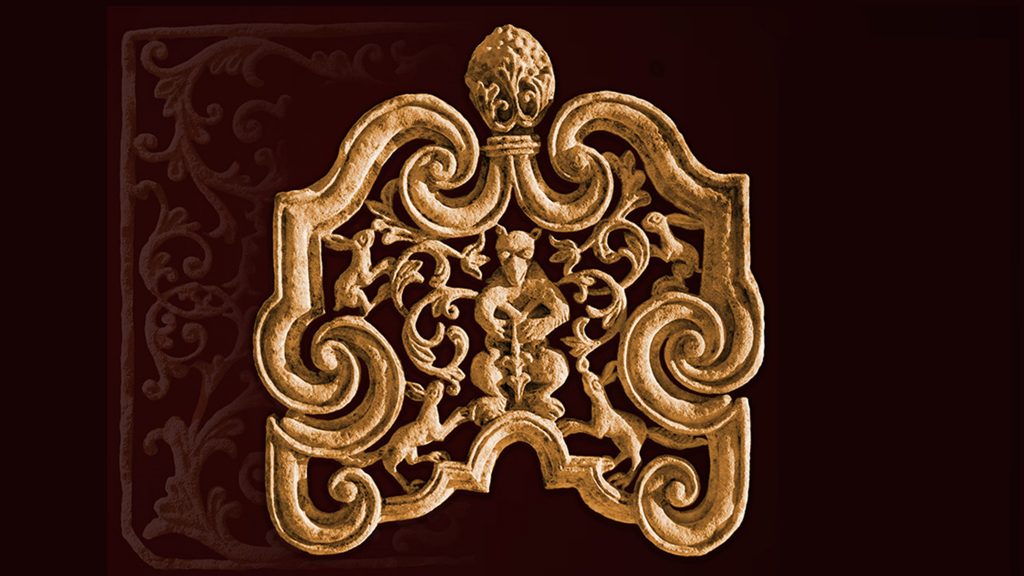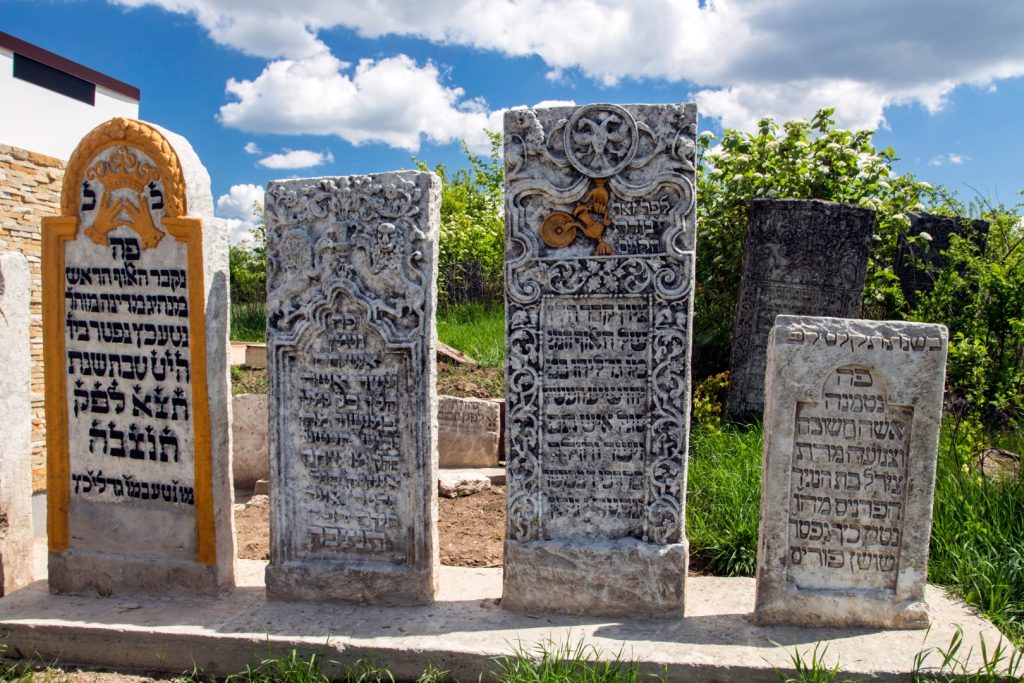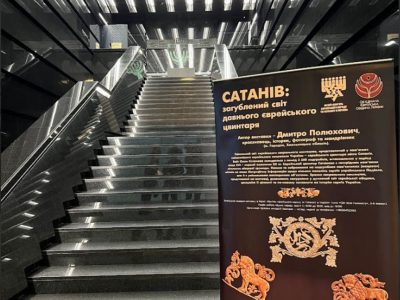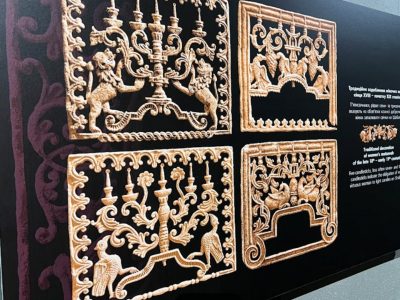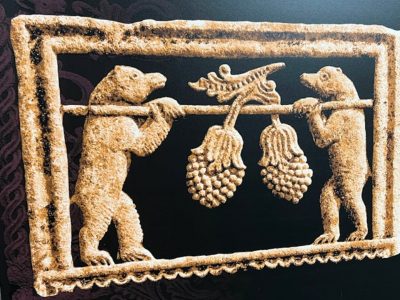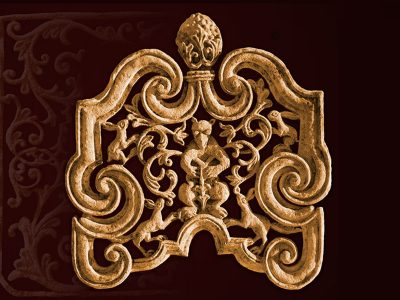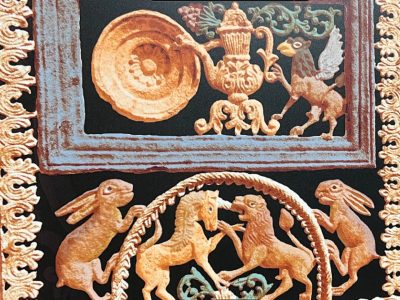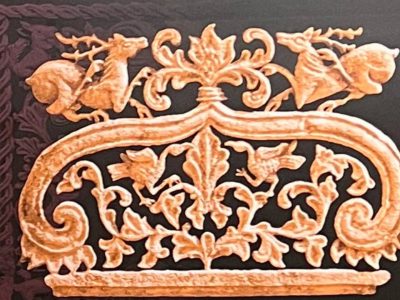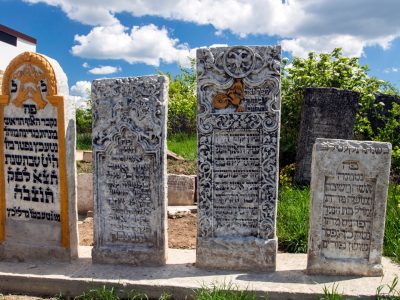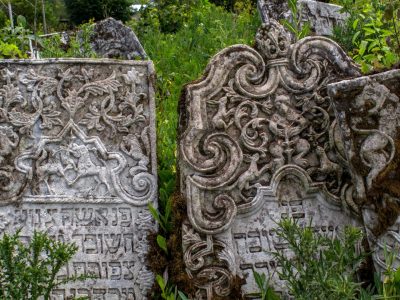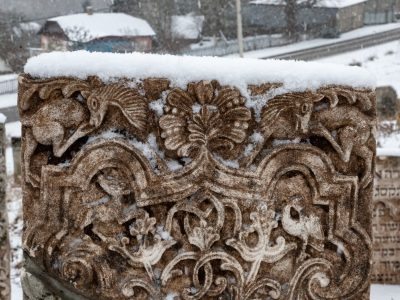A mystical "zoo": A Ukrainian researcher reveals the secrets of Podillia's Jewish heritage
The Jewish Museum in Dnipro has unveiled an exhibit called “Sataniv: The Lost World of an Ancient Jewish Cemetery”. The exhibition curator is the regional historian, explorer, photographer, and tourist guide Dmytro Poliukhovych, who is an expert in the history and culture of Ukraine's Podillia region.
Poliukhovych has developed a unique method for working with images depicted on ancient Jewish matsevah (gravestones). He digitally removes the background and highlights the artistic carvings on ancient limestone slabs. The exhibit features 25 tablets of his work.
Poliukhovych discussed his exhibit with the Ukrainian Jewish Encounter.
Shimon Briman: Why is your exhibit called “The Lost World”?
Dmytro Poliukhovych: The civilization of Jews who resided in small towns in Ukraine is a lost world, a kind of Atlantis. These cemeteries are merely sad echoes of it. It is a lost world because today, most Jews, not to mention Ukrainians, have no idea what is encoded in those bas-reliefs. But people are interested in these works. For many, this aspect of Jewish culture and art is a discovery.
What is so special about the bas-reliefs from the small town of Sataniv, in the Khmelnytsky oblast?
The stylistic features of the images depicted on matsevah are particular to every region, and they differ quite considerably. Sataniv matsevahs, particularly those dating to the late eighteenth to early nineteenth centuries, are known for their supreme skill and extraordinary wealth of subject matter. I think that the Sataniv cemetery (kirkut) is the finest in Ukraine. Others do not boast of such a large number of themes.
It is not true that they did not exist, because many cemeteries were destroyed. First of all, the communists played a role in this. In my hometown of Horodok, two Christian cemeteries dating from the seventeenth to the early twentieth centuries were destroyed.
A whole zoo is presented in your exhibition. Which animals are depicted most often, and what mystical symbols do they represent?
The general population of stone deer in the Sataniv kirkut competes confidently with the pride of local lions. You will not see so many antlered beauties in any other ancient Jewish cemetery in Ukraine. This may be linked to the heraldry of Sataniv because this animal embellishes the town's Renaissance-era coat of arms.
A deer most often symbolizes the Promised Land, in a broader sense — Paradise. The prophet Jeremiah said: "I will give you the desirable land, the land of deer." It can be regarded as an allusion to the granting of Paradise to a righteous soul. A deer also indicates zeal in keeping the Commandments. There is a quotation in the Pirkei Avot teachings in the Talmud, which advises: "Be swift as an eagle, and fleet as a gazelle, and brave as a lion, to do the will of your Father who is in heaven."
Deer could also be carved on a man's tombstone at the widow's behest; in that case, it symbolized the beloved. There is a line in The Song of Songs (Shir Hashirim) that states: "My beloved resembles a gazelle or a fawn of the hinds." An antlered beauty also appears in the Psalms: "He maketh my feet like hinds' feet, and setteth me upon my high places."
In the Book of Genesis, Jacob blesses his sixth son, Naphtali: "Naphtali is a doe set free." Thus, gravestones of people named Naphtali quite often depicted this animal. Deer were also portrayed on tombstones of people named Hirsh or Tzvi (deer).
Gravestones of girls and young women traditionally featured fallow deer, symbolizing beauty, grace, purity, and love. The Proverbs of Solomon refer to "a loving doe, a graceful deer."
I was surprised by the image of the two bears carrying bunches of grapes. The deceased was probably called Ber (Berel) or Dov (bear) in Yiddish and Hebrew, respectively. Is this correct?
The two bears are actually an allusion to two righteous scouts from the Bible who brought back correct information about the Promised Land. The image suggests that during his life, the deceased always obeyed the Lord, like the heroes of the biblical tale once did. In the Jewish tradition, bears holding grapes also recall that a share of the benefits (grapes) of Paradise awaits the righteous Jew in the afterlife.
Bears depicted on gravestones also embody the idea of resurrection. In the fall, the bow-legged beast goes into his underground den (grave) and rests there until springtime, then wakes up (resurrects) and goes out into the sunlight.
What does the female bear depicted on one of the gravestones signify?
This is a matsevah of a woman named Bryna. We see a parallel between the color of the fur and the name. Bryna means "brunette" in Yiddish. Quite a few meanings are encoded here. For example, a she-bear is also the personification of a caring mother. The little foxes and rabbits are probably her children. Everyone knows how protective she-bears are. The shoots in the bears' paws symbolize the Tree of Knowledge and the Tree of Life. The bunch of grapes at the top of the matsevah is a symbol of the fruits of Paradise.
One matsevah depicts a bear that has climbed to the top of a tree in search of honey. Honey symbolizes the sweet knowledge of Divine Wisdom. In other words, it suggests that the deceased person strove upwards (like a bear up a tree), in order to taste of the Torah's "honeyed" wisdom.
Were all these wonderful bas-reliefs made by the same master artisan in Sataniv? Do we know his name?
Judging according to style, we see the work of six or seven master artisans in the Sataniv necropolis, especially the gravestones dating from the 1770s to the 1810s. Their work can also be seen in the neighboring towns of Kupyn, Smotrych, and Horodok. But we know their names.
I know that, in addition to studying ancient bas-reliefs, you are also fighting to preserve them. What is threatening the Jewish necropolis of Sataniv today?
Don't think I'm an antisemite when I say that the ancient matsevah are under threat from a few local Jewish businessmen, who are destroying these masterpieces of Jewish art. Unfortunately, in the last few years, the cemetery in Sataniv has suffered irreparable damage. I am talking about so-called restoration, in the course of which gravestones were moved, sometimes dozens of meters away from the real grave. I am Ukrainian, and even I know that this is a violation of Jewish religious precepts.
The matsevah have been ripped out of their eternal place and mounted on concrete plinths. The concrete base is actually eroding the monuments. The matsevah are cleaned with stiff iron brushes. This is a quick and effective method, but it's destroying the carvings, not to mention the cheap gold paint and ugly black enamel used in the lettering.
I think that covering the matsevah with cheap paint, made to look like gold and black enamel is a kind of vandalism. Covering the matsevah with paint prevents the infiltration of oxygen, so the limestone is turning into dust. The gold paint is constantly peeling off. In other words, this practice is causing the destruction of the small, fine details of the carvings.
What is the goal of your work with these Jewish bas-reliefs?
My super-task is to show Ukrainians the fascinating culture, customs, and art of the Jewish people, our neighbors; to foster peace, harmony, and the consolidation of society.
I hope that this work will be boosted by my new book, which will include illustrations and explanations of all the spiritual symbols that are encoded in the Sataniv necropolis. The book is coming out in the spring of 2024.
Backgrounder
Jews arrived in Sataniv in the early sixteenth century; as of 1578, there were already eighty families living here. The eighteenth century coincided with the rapid growth of the community, which by 1765 numbered 1,525 people. The census of 1897 reveals that 2,848 Jews lived in Sataniv (68 percent of the population). Over a thousand Jews in Sataniv were killed during the Holocaust, 240 of whom were buried alive in the stone cellar of one of the town buildings. Today there are no Jews living in Sataniv.
Interview conducted by Shimon Briman (Israel)
Photos courtesy of Dmytro Poliukhovych (Ukraine)
Translated from the Ukrainian by Marta D. Olynyk







